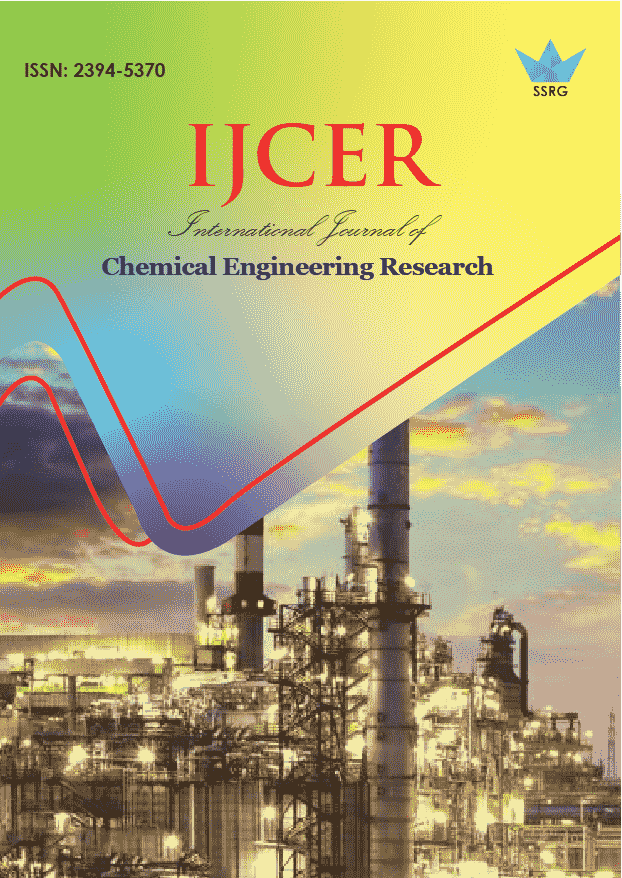Removal of Copper from Industrial Waste Water by Coconut Husk as a Low Adsorbent

| International Journal of Chemical Engineering Research |
| © 2016 by SSRG - IJCER Journal |
| Volume 3 Issue 3 |
| Year of Publication : 2016 |
| Authors : Hanit Kumar Thapak, Prashant Singh, Manmohan Sharma, Siddharth Barolia |
How to Cite?
Hanit Kumar Thapak, Prashant Singh, Manmohan Sharma, Siddharth Barolia, "Removal of Copper from Industrial Waste Water by Coconut Husk as a Low Adsorbent," SSRG International Journal of Chemical Engineering Research, vol. 3, no. 3, pp. 1-4, 2016. Crossref, https://doi.org/10.14445/23945370/IJCER-V3I6P101
Abstract:
Adsorption of catonic and heavy metal onto coconut husk as a low cost adsorbent was studied as a fuction of amount of adsorbent,Ph,contact time and concentration.it was found that percentage adsorption varied linearly with the ph and adsorption dose but varies nonlinearly with contract time.Coconut husk was collected near achlechwar temple(shiv temple) Gwalior m.p india. near achlechwar temple generated 2600kg of coconut husk waste per month which create tremendous problem in environment. As our honorable prime minister shri narendra modi more focus on clean and green india for this an effective adsorbent was developed by coconut husk waste which not only eradicate heavy metal but also removed harmful impurities from waste water. Adsorption is best way for effective purification and separation technique used in industry especially in wastewater treatments. Cost is an important factor for comparing the adsorbent materials. Therefore, there is increasing research interest in using alternative low-cost adsorbents. To removing this heavy metal activated charcoal as a good adsorbent but it is quite costly. The experiment result shows the maximum removal of copper by coconut husk adsorbent is 89%.
Keywords:
Coconut Husk, Heavy Metals, Adsorption, Industrial Wastewaters.
References:
[1] Coconut, Plant of Many Uses. University of Califonia, Los Angelis course on Economic Botany (1994).
[2] W.P. Armstrong, Botanical Records Breakers, 19. The Most Valuable Botanical Jewels: (2008).
[3] J.M. Smith, Chemical Engineering Kinetics. New York: McGraw-Hill (1970).
[4] Agency for Toxic Substances and Diseases Registry (ATSDR). Toxicology Profile for Copper Atlanta: U.S. Department for Health and Human Services, Public Health Service (2004).
[5] B.S. Cho, A Study on Heavy Metal Adsorption Using Shrimp Shell (D). M.Sc. degree Thesis, Chosum University, Korea (1994).
[6] Amuda,O.S.;Giwa,A.A.;Bello,I.A. Removal of heavy metal from industrial wastewater using modified activated coconut shell carbon.Biochem. Eng.J.2007,36, 174–181.

 10.14445/23945370/IJCER-V3I6P101
10.14445/23945370/IJCER-V3I6P101